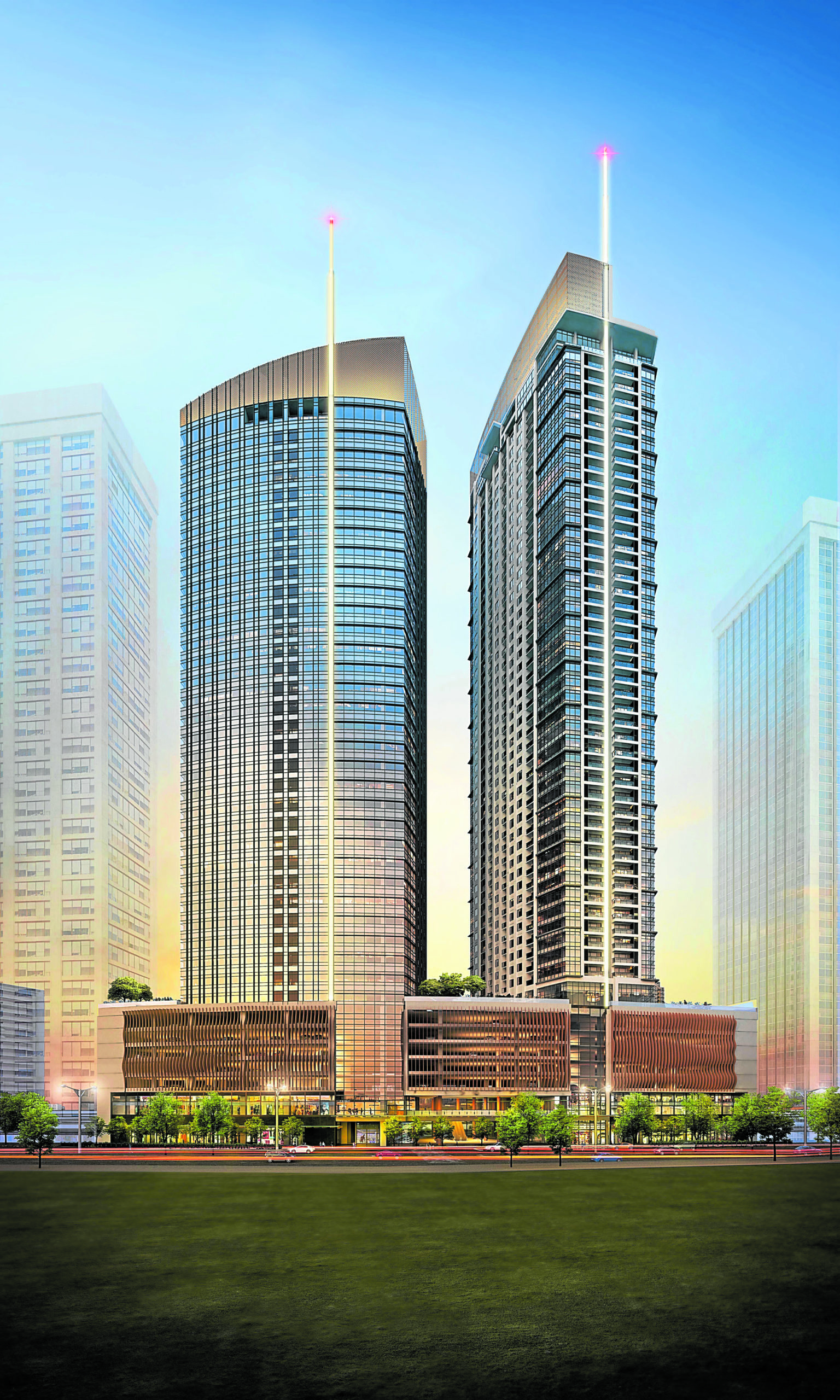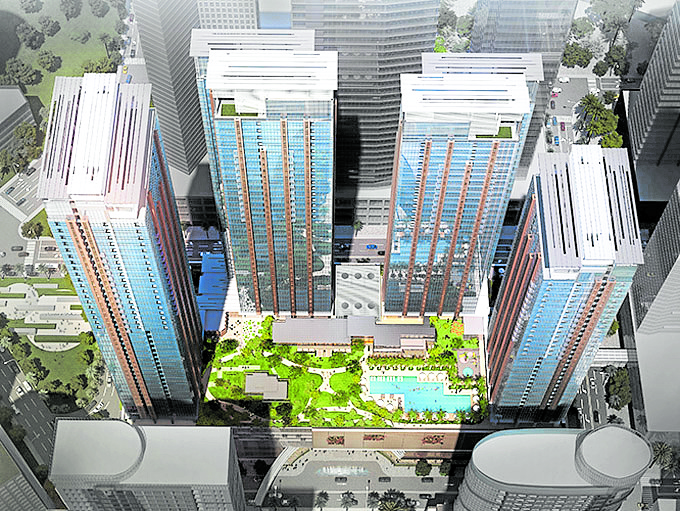Could high-rises be the future of postpandemic living?

Enlightened designers will revolutionize high-rise residential units to be suitable spaces for working and studying from home.
The architecture industry currently faces a crossroads. At a time when quick response and effectiveness are at a constant game of tug-of-war, would this be the perfect time to rethink everything? Or should we stick to quick, specific and pragmatic responses where we’re most comfortable?
Birthing postpandemic architecture
Just as how modernism was at least partially inspired to promote healthy living conditions during the first half of the 20th century, it is certain that the challenges brought about by the present pandemic will birth new philosophies, technologies, and practical solutions to everyday life.
An architect’s understanding of the built environment is one thing, but it is equally important to be in touch with the public’s understanding of how the built environment should work. The pandemic may not last forever, but the way we respond to its impact will shape the built environment of the future.
To fully understand the role of architecture in postpandemic recovery, it is important to have a deeper understanding of the ways we inhabit and move through buildings as well as other physical spaces. The present built environment may not be specially designed to restrict the effects of the pandemic, but as designers and the public learn more about COVID-19, a new mindset over fear of infection emerges, eventually translating into forms that likewise follow fear of infection.
Now that designers and property owners are tasked to carefully weigh the pros and cons of crossing the threshold between the indoors and the outdoors, between the lower and upper floors, and generally between public and private spaces, where do we draw the line?
Article continues after this advertisementThis does not always have to be the case, however, thanks to the surge of multifunctional and flexible spaces.
Article continues after this advertisementFlexibility, the oyster of postpandemic living
If there is one word whose usage drastically increased throughout the pandemic, it would be “flexibility.”
As the people continue to adapt to each locality’s ever evolving pandemic and quarantine protocols, the postpandemic home of the future should embody spatial and functional flexibility to accommodate such changes. Given the demands of adaptability and multifunctionality, there is simply one building type that comes to mind—high-rises.
Flexible spaces for working, studying
Especially at a time when employees and students are encouraged to work and study at home, shared areas and spatial amenities offered by high-rises could be used as co-working spaces.
Enlightened designers will revolutionize high-rise residential units to be suitable spaces for working and studying from home, hence, a more segregated spatial organization will be encouraged. This could either come in the form of a separate nook or room, both equipped with large windows, blackout curtains, ergonomic furniture, and sound insulation.
High-rises that are strategically located within central business districts make them an excellent receiver of network and telecommunication signals, which are vital in remote working and studying arrangements.
Flexible modes of entertainment
Cabin fever is a thing. Staying at home provided us with limited modes of entertainment and leisure spots to visit in nearby areas. While simply going outdoors may solve cabin fever, our present scenario instead encourages us to think outside the box.
When it comes to guilt- and risk-free recreation, high-rises can offer everything from shopping centers, gyms, cafés, restaurants, cinemas, and swimming pools—no longer requiring people to travel distances for relaxation. Depending on the building’s exclusivity, the location of recreational spaces within high-rises varies, from the ground floor to specially designed rooftops.
Flexible means of self-sufficiency
Extended time indoors, where most residents are expected to stay productive, could impose various challenges on the planning and design of postpandemic housing. More specifically, there will be a great emphasis on the construction of self-sufficient buildings and lifestyles.
Given their limited space, dwellings located inside high-rise buildings have a heightened sense of functionality with their space-saving features and makeshift spaces. The healing effects of light, nature, and air are also emphasized in high-rises, with residential units surrounded by their own garden spaces, all while having larger communal gardens where people can relax and congregate.
Utilities are also encouraged to be as self-sufficient as possible, with energy-efficient strategies on cooling and heating systems, water supply, and even food production. While we cannot ignore the relatively high densities in high-rises, touchless technologies can limit physical contact by eliminating the need to push or touch surfaces.
Flexible access for traveling
It is expected that heightened social distancing protocols will encourage a horizontal mode of development for heavily populated cities. Given the limited land resources suitable for development, another option would be the integration of mixed-use developments in high-rise communities.
The accessibility and convenience offered by high-rises are comparable to the likes of cities with an efficient network of cycling and walkable streets. With everything within easy reach at walking distances, both scenarios promote environment friendliness that encourages the physical and mental health of the people.
Flexible construction
Although modular construction is already popular even before COVID-19, its affordability and quick construction have made it even more relevant as buildings adjust to increased floor areas and space requirements to accommodate social distancing, treatment, and quarantine protocols.
While modular construction is conventionally used for residential buildings ranging from four to eight stories, the efficiency of this new form of construction proves to be suitable for buildings up to 12 stories or more. Since the majority of high-rises are made of multiple repeated units, the wide use of prefabricated and easy-to-install materials which can be easily dismantled and reused make them compatible with modular construction.
Recognizing the flexibility of high-rises
Rather than optimism, a futuristic mindset is the pinnacle of architectural thinking. At a time when quick response and effectiveness are at a constant game of tug-of-war, would this be the perfect time to rethink everything? Or should we stick to quick, specific and pragmatic responses where we are the most comfortable? Thanks to the flexibility of high-rises, we can get the best of both worlds with just a few steps away.
The author manages his own architectural studio helping local and international clients with various unique and future design specialties for hotels, condominiums, museums, commercial and mixed-use township developments with a pursuit for the meta-modern in the next Philippine architecture. Visit FulgarArchitects.com.
